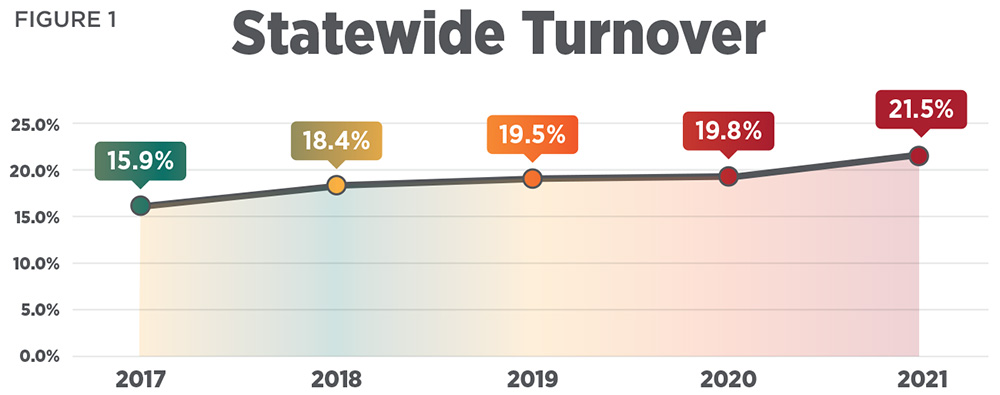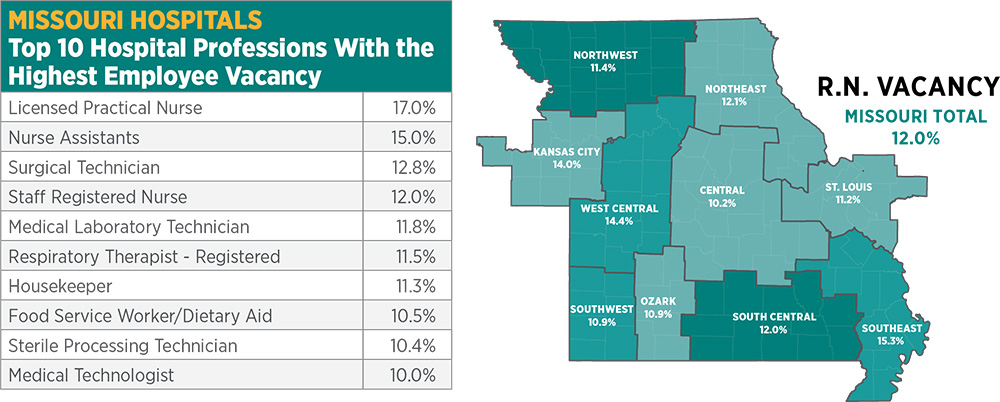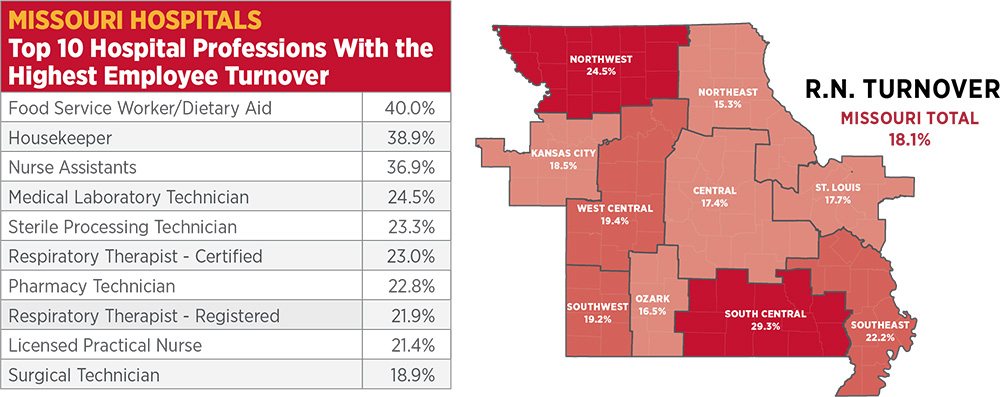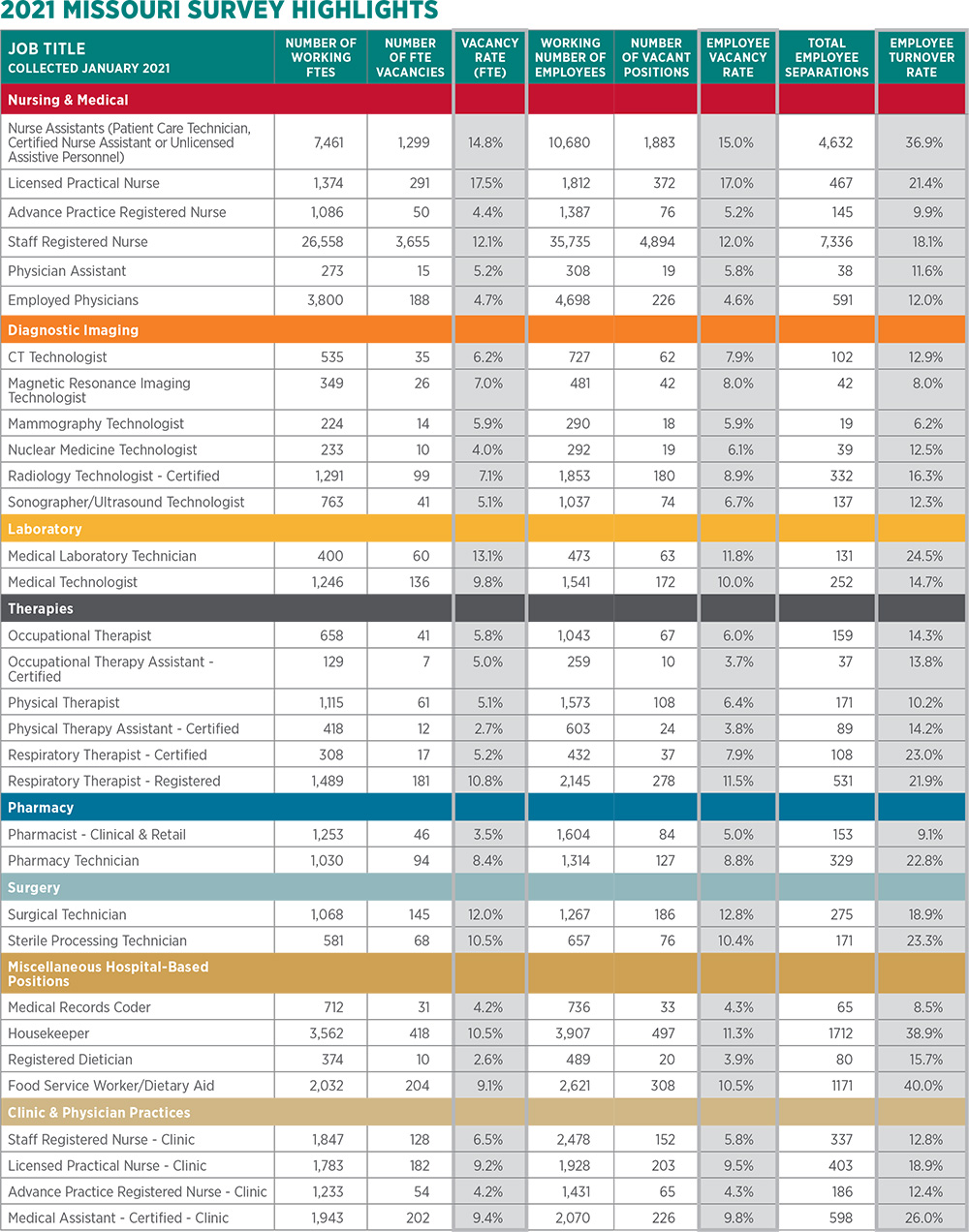Expert

Jill Williams
Actions
Type
Topic
- Economic Impact
- Workforce
Tags
These are difficult times when it comes to health care staffing. Allocating personnel is a challenge even under normal circumstances, but with the COVID-19 pandemic stretching the system to its breaking point, achieving both efficiency and quality patient care requires hospitals and health systems to innovate workforce recruitment and retention efforts. Workforce investments contribute to an organization’s success through recruitment cost savings, reduced turnover, higher patient satisfaction and increased quality of care.
The data in this report reflect the status of the hospital workforce in 2020, and thus reflect a COVID-19 workforce. A statewide analysis finds increased vacancy and turnover rates among a majority of the health care positions surveyed. The data indicate a combined turnover rate among all professions surveyed reached an all-time high at 21.5% statewide (Figure 1).

Staff nurses make up the largest number of hospital employees in Missouri. This year’s report finds a staff nurse vacancy of 12%. Staff nurse turnover increased 2% from 2020, which is the highest it’s been in the 20-year history of this survey at 18.1%. According to this survey, Missouri has 35,735 nurses working in hospitals and 4,894 vacant staff nurse positions.
It’s important for health care facilities to take a step back, reassess their labor needs, and develop a proactive response to staff recruitment and retention. The topic of workforce management in health care isn’t new, but COVID-19 surges brought attention to the need for hospitals to take a proactive approach.
MHA’s report, “The Impact of COVID-19: 5 Ways Workforce Planning Will Never be the Same,” examines how the pandemic influenced the hospital workforce and how it will alter workforce planning in the future.
The report is built around five pillars of change, including preparedness, the influence of employee care on patient care, individual and organizational skill-building, agile leadership, and new thinking in recruiting and retention. Each pillar includes lessons learned from Missouri hospitals, as well as recommended action steps for hospital leaders, workforce planners and stakeholders. Building on established learning is a fundamental principle of quality improvement in health care.
There is tremendous potential for hospitals to foster stakeholder collaboration to address the gap between workforce supply and demand while expanding opportunities for incumbent employees to advance within health care career pathways. By using the lessons learned during the COVID-19 pandemic, hospitals — and partners in academia and workforce development — can transfer the best practices established during the pandemic to build a more robust hospital and health care workforce.
2021 Statewide Report
A printable Workforce Report also is available.
The report includes data from 131 hospitals and identifies trends among 28 hospital-based positions and four clinic and physician practice positions.
2021 Regional Reports
- Central
- Kansas City
- Northeast
- Northwest
- Ozark
- South Central
- Southeast
- Southwest
- St. Louis
- West Central
Also available is a workforce report specific to Missouri’s critical access hospitals. Missouri is home to 35 CAHs, and each submitted CY 2020 data for MHA’s 21st annual workforce survey that focuses on turnover and vacancy rates both regionally and statewide.
METHODOLOGY
A total of 131 Missouri hospitals participated in this year’s survey. The survey requested data on 28 hospital health care positions and four clinic and physician practice positions. Responses are collected by Missouri Hospital Association. Data are reported as of Dec. 31, 2020.












